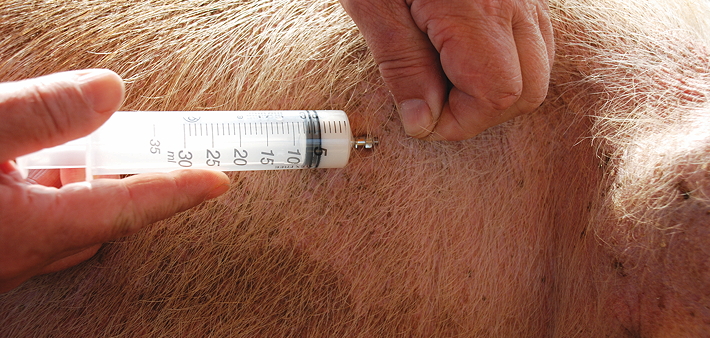Joe Lunt qualified from University of Liverpool and has been a pig vet ever since, working at the Garth Pig Practice and now at Oakwood Vets, in Norfolk
It seems to me that every time I see dry coughing in pigs, everyone assumes it is PRRS.
But an often-forgotten disease is influenza, commonly known as flu, which affects most mammal species, including ourselves and some avian species. With flu viruses being very diverse and rapidly mutating, they are very difficult to vaccinate against – human vaccines have to change every six months.
Flu recently hit the headlines when it caused a total shutdown of horse racing for just under a week.
In pigs, it can show very similar initial signs to PRRS, with a dry cough, lethargy, high temperatures and inappetence being the first signs noted by most. Often whole groups of pigs will become listless. The virus can be transmitted through direct and aerosol spread and equipment. It usually spreads very rapidly through herds, only taking 24 hours to move from infection to clinical signs.
The good news is that, as quickly as it comes in, the clinical signs subside within 3-5 days.
It is very rarely associated with mortality in the case of pure flu cases, but secondary infections with bacteria often do cause mortality. Other effects on the breeding herd include sows drying off prematurely and sow infertility, as well as boars being infertile for up to eight weeks.
Abortions are often associated with the transient high temperature that goes with flu infection, as well as early farrowing with weak and low viability piglets.
Once pigs are clinically recovered, viral shedding rapidly declines and the virus does not persist in the environment. It can, however, persist in nursery-type units where naive animals are introduced to feed the fire, especially when associated with PRRS. It is often referred to as ‘blu flu’ when animals are infected by the cohort ahead of them, as their maternal immunity wanes and they are stressed from weaning.
Proper separation of batches is the key to overcoming this cycle.
Flu in pigs is very much like the human version in that it survives better in cooler temperatures.
Due to low mortality, diagnosis is mainly through clinical signs and blood sampling for the virus (during outbreak) or antibody (post-recovery), or swabs sent to APHA.
Prevention is through good biosecurity, including isolation of incoming stock and preventing
birds coming onto the unit. It is also important to ensure visitors, including vets, have been away from infected farms for at least 48 hours.
The tricky part can be differentiating when ailing staff simply have a cold/cough or pose a risk of being a flu carrier to the pigs.
Treatment is purely supportive, with multi-vitamins and nonsteroidal anti-inflammatory drugs (NSAIDs) helping with symptoms, rather than being a cure as anti-virals are not available for livestock.




